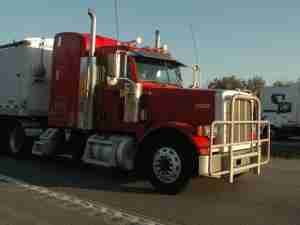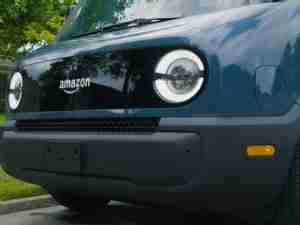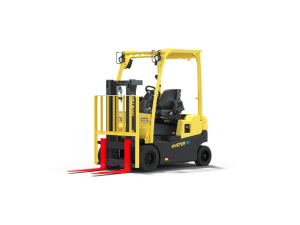ATLANTA - UPS (NYSE: UPS) may be known for its drivers in iconic brown uniforms and delivery vehicles, but the company is built on technology to help its employees better serve customers – and 2018 was a banner year for innovation and technology deployment at UPS.
Founded in 1907 as a messenger service with two then-revolutionary telephones, UPS now develops service-oriented technologies using artificial intelligence (AI), the Industrial Internet of Things (IIoT), and advanced data analytics. The company’s logistics experts and engineers collaborate with technicians, mathematicians and data analysts around the globe to simplify complex supply chain problems.
“UPS is known for its culture of service and for being a great place to build a career. And we have tremendous success developing new technologies that provide a better customer experience and make our business more efficient,” said Juan Perez, UPS chief information and engineering officer. “For example, traditional GPS inspired UPSNav, which more accurately directs our drivers to their destinations. Or ORION, the UPS-developed complex algorithm that optimizes 30,000 UPS® delivery routes every minute. Or the UPS.com virtual assistant, which last year played a key role in providing answers to our customers, saving them time and effort. Technology is in our DNA, and we’re using it to transform the way we help our customers every day.”
Technology deployments and industry-leading innovations proved to be a catalyst for the company’s appearance on many prestigious rankings in 2018.The Drucker Institute, which ranks large publicly held U.S. companies for corporate effectiveness, ranked UPS 20th overall and the first-place Transportation/Logistics company out of more than 750 corporations. Other achievements in 2018 include the JUST 100 list for social responsibility, the Dow Jones Sustainability World Index, the Harris Poll Reputation Quotient (#7), and Newsweek’s America’s Best Customer Service (#1 in Shipping and Delivery Services). UPS also was listed as one ofFortune’s Most Valuable Brands (#1 for Transportation and #44 overall) and Business.org’s Most Popular Brands in eight states, which is more than any other company.
Some of the breakthrough achievements that UPS unveiled in the last year are on display at the company’s facilities around the world, including at its new state-of-the-art regional hubs in Atlanta and Salt Lake City. They include:
UPS’s digital customer engagement also saw significant improvements in 2018. Some noteworthy advancements include:
Some of the technological breakthroughs are applied to continually modernizing UPS’s global fleet of more than 125,000 vehicles. The company is developing the infrastructure to support electric and compressed natural gas (CNG) vehicles. A consortium led by UPS in London deployed a radical new charging technology that overcomes the challenge of simultaneously recharging an entire fleet of electric vehicles (EVs) without the need for the expensive upgrade to the power supply grid.
- UPSNav, a significant update to UPS’s On-Road Integrated Optimization and Navigation (ORION). UPSNav provides UPS drivers with a new level of accuracy and precision that’s not available with conventional GPS, enabling the company’s drivers to operate at top efficiency while improving their customers’ experience.
- Network Planning Tools (NPT) that combine advanced analytics, artificial intelligence and operations research to more efficiently coordinate ground, air and rail traffic between hubs to make the best use of sortation capacity. NPT empowers UPS to offer more reliable service to customers.
- Harmonized Enterprise Analytics Tool (HEAT) for hub operations that creates more accurate forecasts about the package volume that will need to be processed within UPS facilities. HEAT generates network efficiencies and enables the company to provide top-notch customer service. Its functionality will advance in 2019.
- Mobile tools that enhance on-road productivity and new delivery helper apps that speed training for more than 50,000 seasonal delivery personnel. The tools also help them provide better customer service.
- Dynamic Sort Instruction (DSI) transforms a highly complex package sorting process into a simple scan, listen and sort process. DSI increases employee productivity and shortens the training time for many of UPS’s new and seasonal employees who work inside facilities.
- UPS internet shipping enhancements, like integration with 18 eMarketplaces to support eCommerce growth.
- UPS tracking/visibility enhancements, including significantly improved accuracy of estimated delivery dates and times.
- Easier online import notifications.
- UPS My Choice expansion to additional countries, enabling more consumers to enjoy the flexibility that UPS My Choice offers.
- Expansion of Saturday Ground delivery, allowing more customers to expedite Monday deliveries to the prior Saturday.
- Introduction of a Cold Chain packaging platform offering Healthcare customers more temperature-sensitive shipping solutions.
- UPS Returns Manager, which makes it easier for consumers to return packages and easier for shippers to define and manage their return policies.
UPS also has deployed electric-assisted cargo tricycles in 30 high-density cities around the world to help reduce traffic congestion and emissions. The company is now testing a version of these cargo bikes that features removable package boxes, enabling staff to load and unload the cargo bikes more quickly throughout the day.
“One of the most exciting things about working at UPS is enabling our employees to develop new solutions and apply them to real-world environments,” said Perez. “We’re moving more quickly, embracing more opportunities, and giving the world a glimpse of what UPS will look like in the years to come as we continue to build our Global Smart Logistics Network.”








